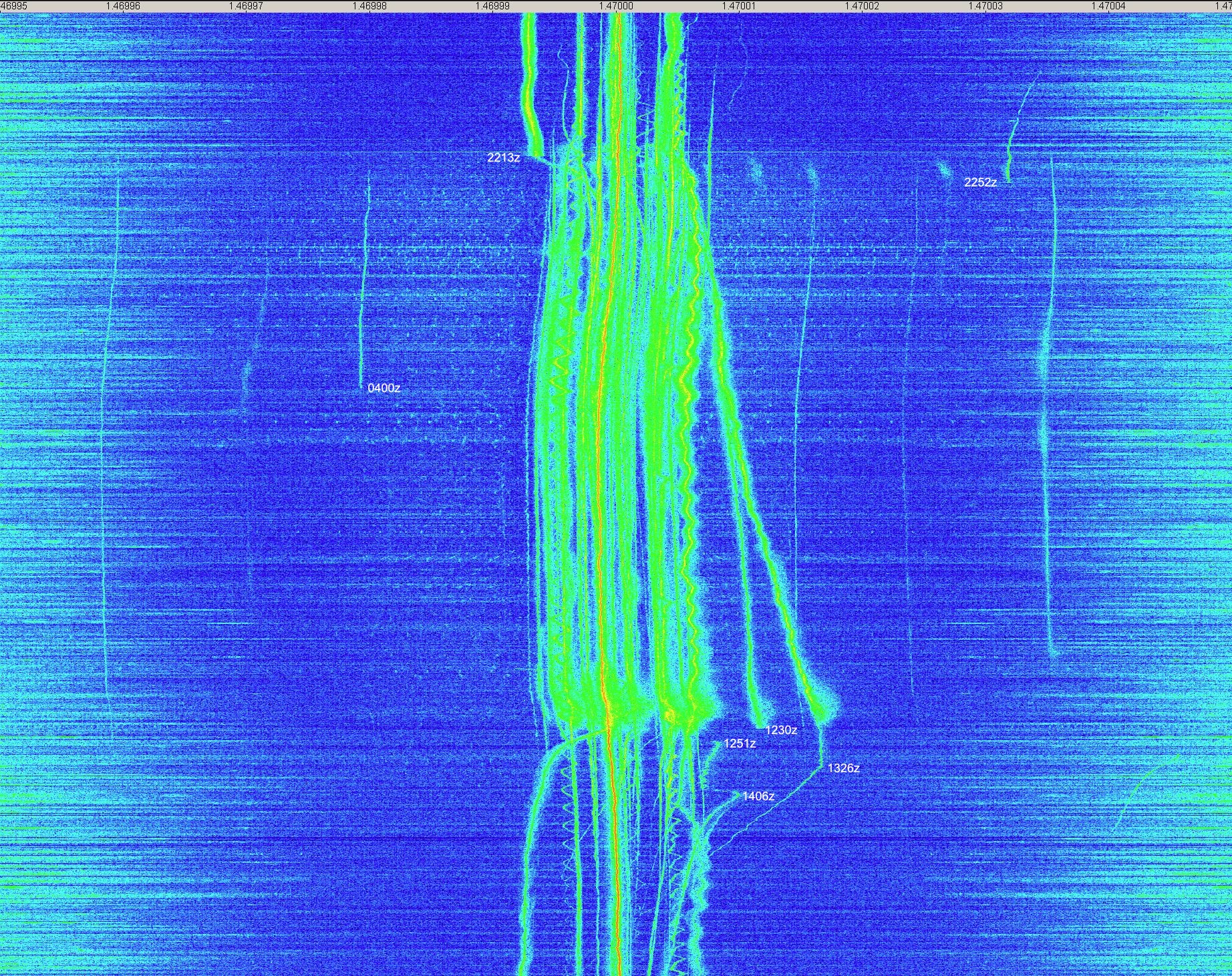This waterfall was recorded from 1840 UTC January 3, 2011 to 1840 UTC January 4, 2011. The beginning of the recording is at the top of the image. It shows the carriers of MW radio stations on 1470 kHz. The width is 100 Hz, so frequencies +/-50 Hz from 1470 kHz are shown.
Click on it to open it full sized.
The red line you see in the center is the carrier of semi-local station WTTR. During the daytime it is the only audible station on 1470, although you can see that carriers for about 8 other stations are always present.
I’ve annotated several events with UTC times.
At about 2213 UTC you can see a sudden reduction in received signal strength, and the start of a drift in frequency. This is most likely due to a station switching to nighttime power levels. The change in transmitter power causes a change in temperature inside the transmitter, causing drift in the frequency. My suspicion is that it is WLOA from Farrel, PA, since they are supposed to switch at 2215 UTC.
At about 2252 UTC a carrier suddenly disappears. It is possible that this is KMAL from Malden, MO. They are supposed to shut down at 2300 UTC.
Note that these are hunches of mine, I am not 100% certain that these are the identified stations. These events do suggest that it may be possible to identify and DX stations based on carrier transients, if the actual times that the stations make the changes are known.
At 0400 UTC a carrier suddenly disappears. I am not sure who this could be. This would be 11 PM EST. The station started to fade in around 2300 UTC (6 PM EST). That suggests to me a station in the central US. I’m not sure why they would be shutting down at this late time of the evening, vs around sunset. Perhaps some more experienced MW DXers have some theories / candidates?
There’s also some transients in the morning.
First at around 1200 UTC (7 AM local time) you can see the received signal strengths of the distant carriers decrease. The Sun is rising, and the D Layer is forming again, attenuating MW skywave signals.
At 1230 UTC one of the carriers suddenly disappears. At 1251 a carrier appears.
At 1326, it looks like a a transmitter is changing power levels.
At 1406 UTC there is another transient on another carrier.
There’s also noticeable differences in the frequency regulation of transmitter carriers. Several of the carriers have a periodic cycling to the frequency. I thought is this is due to some temperature cycling in the transmitter.


Pingback: Graveyard Medium Wave Frequencies | Nomadiq Blog